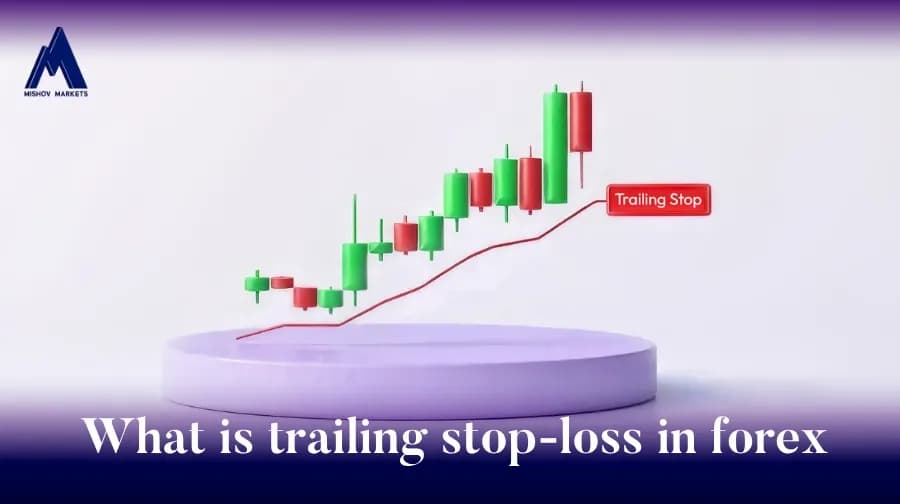What is trailing stop loss in Forex

Forex trailing stop-loss, how it works and why do you need it? In the foreign exchange market, conditions can change within seconds, and traders yearn for strategies that protect their profits while still willing to capitalize on trends. A strategy such as a trailing stop loss is popular for the same reason. It is a dynamic tool that helps traders lock in gains without manually closing positions. Unlike traditional stop-loss orders, a trailing stop adjusts automatically as the price moves in the trader’s favor, offering both flexibility and profit protection. This article will explore what a trailing stop-loss strategy is, how to implement it, and the best methods to maximize its effectiveness. Whether a trader is a beginner or an experienced one, understanding the trailing stop-loss strategy can significantly enhance their trading performance and risk management.
What is Trailing Stop-Loss in Forex?
Trailing stop-loss in forex is a risk management tool that helps traders adjust their trades in a way that would automatically move in their favor. This helps them lock in profit while limiting potential loss. A standard stop loss remains fixed at a specific price, but a trailing stop trails (follows) the market price by the specified distance, such as a certain number of points or percentage. For example, if a trader sets a trailing stop 20 points below the current price in a “buy” trade, then if the price rises, the trailing stop loss will move upward and maintain the 20-point gap. In addition to that, if the price goes down, the trailing stop loss remains fixed at its last adjusted level and will lead to closing the trade if the market hits that point. This feature is particularly useful in capturing profits in trending markets while protecting against sudden reversals. Overall, it helps traders to automate their exit strategy effectively.
How to Do a Trailing Stop-Loss?
Implementing a forex trailing stop-loss is straightforward and can be done on most trading platforms. First, when opening a trade, traders should check if the trading platform allows them to set a trailing stop loss directly. Then traders will specify the trailing distance, for example, 20 or 50 points (2 or 5 pips). As the market price moves favorably, the stop-loss follows at the preferred distance. For example, if a trader enters a long trade at 1.20000 with a 30-point trailing stop, the stop-loss begins at 1.19970. If the price climbs to 1.20030, the stop-loss adjusts to 1.20000. Should the price fall back to 1.20000, the trailing stop-loss triggers, closing the position with a locked-in profit. All traders can have access to trailing stop using Mishov Markets’ trading platform (MT5), but for traders without direct trailing stop options on their platforms, manual monitoring is necessary. Tools like Expert Advisors (EAs) in MetaTrader 4 automate the trailing stop-loss strategy, saving time and ensuring consistent execution. This method combines discipline and automation to protect forex traders against unexpected reversals.
How to Use Trailing Stop-Loss in Forex Effectively
The key to successfully using a forex trailing stop-loss lies in determining the right trailing distance. A trailing stop that is too tight may get triggered by minor price movements, locking in small gains but missing out on larger trends. Conversely, a trailing stop that is too wide can fail to protect profits during sudden reversals. To effectively use a trailing stop-loss strategy, traders often combine it with technical indicators such as moving averages, support and resistance levels, and the Average True Range (ATR). For instance, using the ATR to set the trailing stop accounts for market volatility, ensuring the stop-loss adjusts to dynamic price conditions. Research shows that traders who use trailing stops tend to lock in profits during trending markets without the psychological stress of manual exits. A practical example is when a currency pair moves strongly upward during an economic announcement. A 100-point trailing stop would lock profits while allowing the trade to ride the trend.
What is the Best Trailing Stop Method in Forex?
The best forex trailing stop-loss method depends on your trading style and the market’s volatility. For scalpers, a tight trailing stop of 10-15 points may work best because it quickly locks in small profits. Swing traders, however, prefer wider trailing stops of 50-100 points to accommodate larger price swings. One effective method is using the Average True Range (ATR), which measures market volatility. For instance, if the ATR is 40 points, setting a trailing stop at 1.5 times the ATR (60 points) allows room for fluctuations without prematurely closing the trade. Another widely used method is setting the trailing stop-loss at key support or resistance levels. For example, if the EUR/USD pair is trending upward, placing a trailing stop below recent support ensures the trade remains active until a genuine reversal occurs. Combining multiple strategies, such as ATR and support levels, helps traders optimize their trailing stop-loss strategy to match specific market conditions.
What is Trailing Stop-Loss Strategy: The Ultimate Profit Protection
The trailing stop-loss strategy is a valuable tool for forex traders seeking to maximize profits while mitigating risk. It eliminates the need for emotional decision-making, as the trailing stop automatically adjusts in your favor. For example, in a trending market where GBP/USD rises 200 points, a 40-point trailing stop locks in gains at every upward move. Studies indicate that traders who use forex trailing stop-loss strategies perform better in trending markets compared to those using static stop-losses. However, it’s essential to pair trailing stops with proper risk management to avoid overexposure. By backtesting the trailing stop on historical data, traders can refine their strategy and determine the optimal distance. The beauty of the trailing stop-loss strategy is its adaptability. Whether trading short-term breakouts or long-term trends, it ensures profits are protected while giving trades room to grow. This makes it one of the most powerful tools in a forex trader’s arsenal for consistent success.
Summary
Forex trailing stop-loss is a powerful strategy that helps traders manage risk while maximizing profits. Dynamic adjustment to favorable price movements allows traders to capitalize on trends without constantly monitoring their trades. The strategy can suit various trading styles, whether a trader uses technical indicators such as the Average True Range, Support and Resistance levels, or a simple point-based trailing distance. This trailing stop-loss strategy has the ability to automate profit protection, which makes it an essential tool in a trader’s journey. This is particularly beneficial in volatile forex markets. By combining a well-placed trailing stop-loss strategy with solid risk management, traders can improve consistency and reduce emotional decision-making. Ultimately, mastering this strategy is a step toward smarter, more disciplined forex trading and long-term success.








